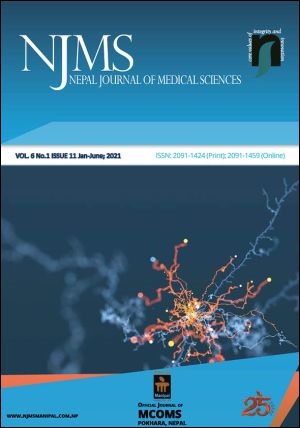ATE Scale to Assess Attitudes towards Euthanasia among Health Professionals in Pokhara, Nepal
DOI:
https://doi.org/10.3126/njms.v6i1.36726Keywords:
Attitude, Euthanasia, ScaleAbstract
Introduction: Most people want to live up to old age with no pain and sufferings. This study is meant to know the opinion of doctors and nursing professionals regarding euthanasia which is an important component for practising euthanasia in Nepal, which is a debated topic in the whole world and Nepal is no exception.
Methods: A descriptive study design was used to conduct this study. ATE scale was used which includes ten questionnaires.
Results: The ATE scale used in this study showed to have internal consistency, with Cronbach alpha at 0.736. Men were found to be more supportive of Euthanasia.
Conclusion: Overall, this study suggests that health professionals from Pokhara have a positive attitude towards Euthanasia with patients request taken as more important.
Downloads
Downloads
Published
How to Cite
Issue
Section
License
Copyright © by Nepal Journal of Medical Sciences. The ideas and opinions expressed by authors of articles summarized, quoted, or published in full text in this Journal represents only opinions of authors and do not necessarily reflect the official policy of Nepal Journal of Medical Sciences or the institute with which the author(s) is (are) affiliated, unless so specified.




